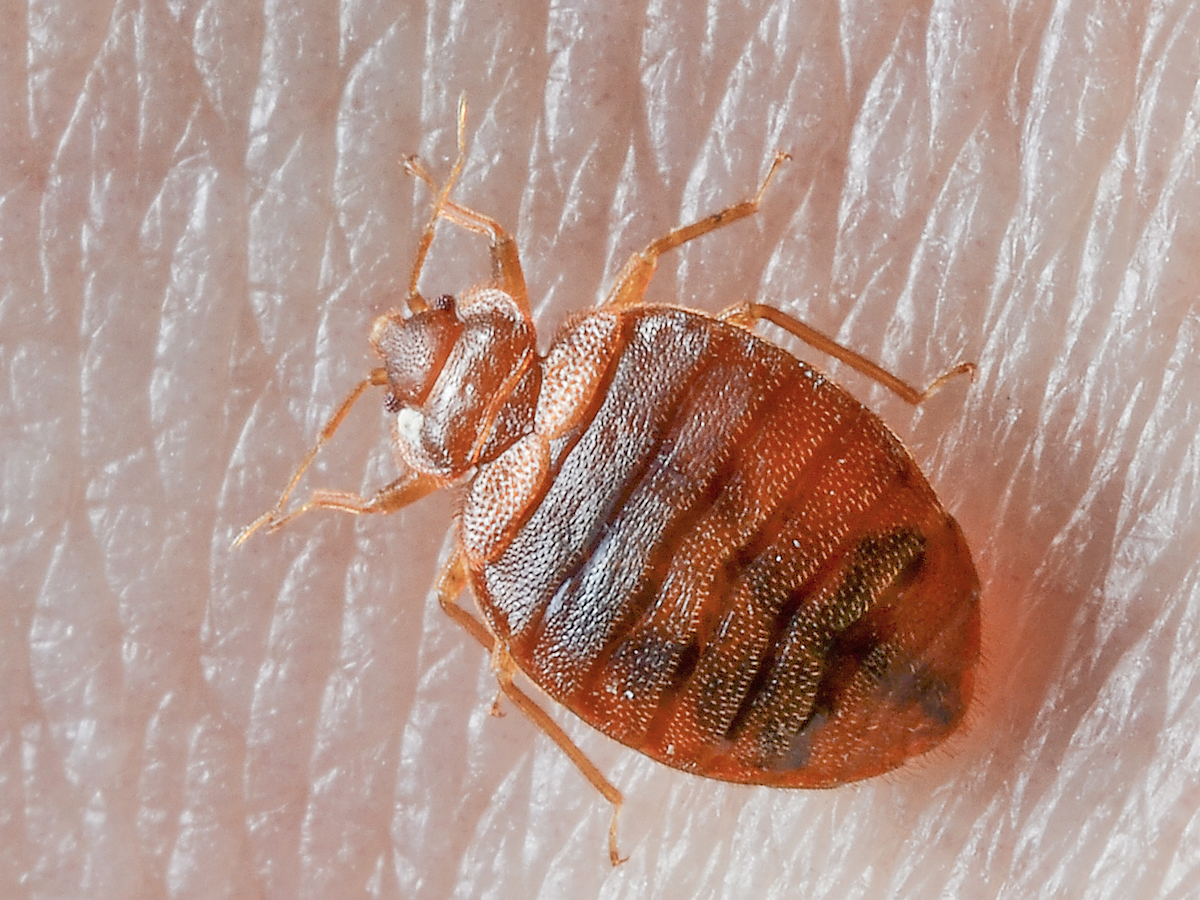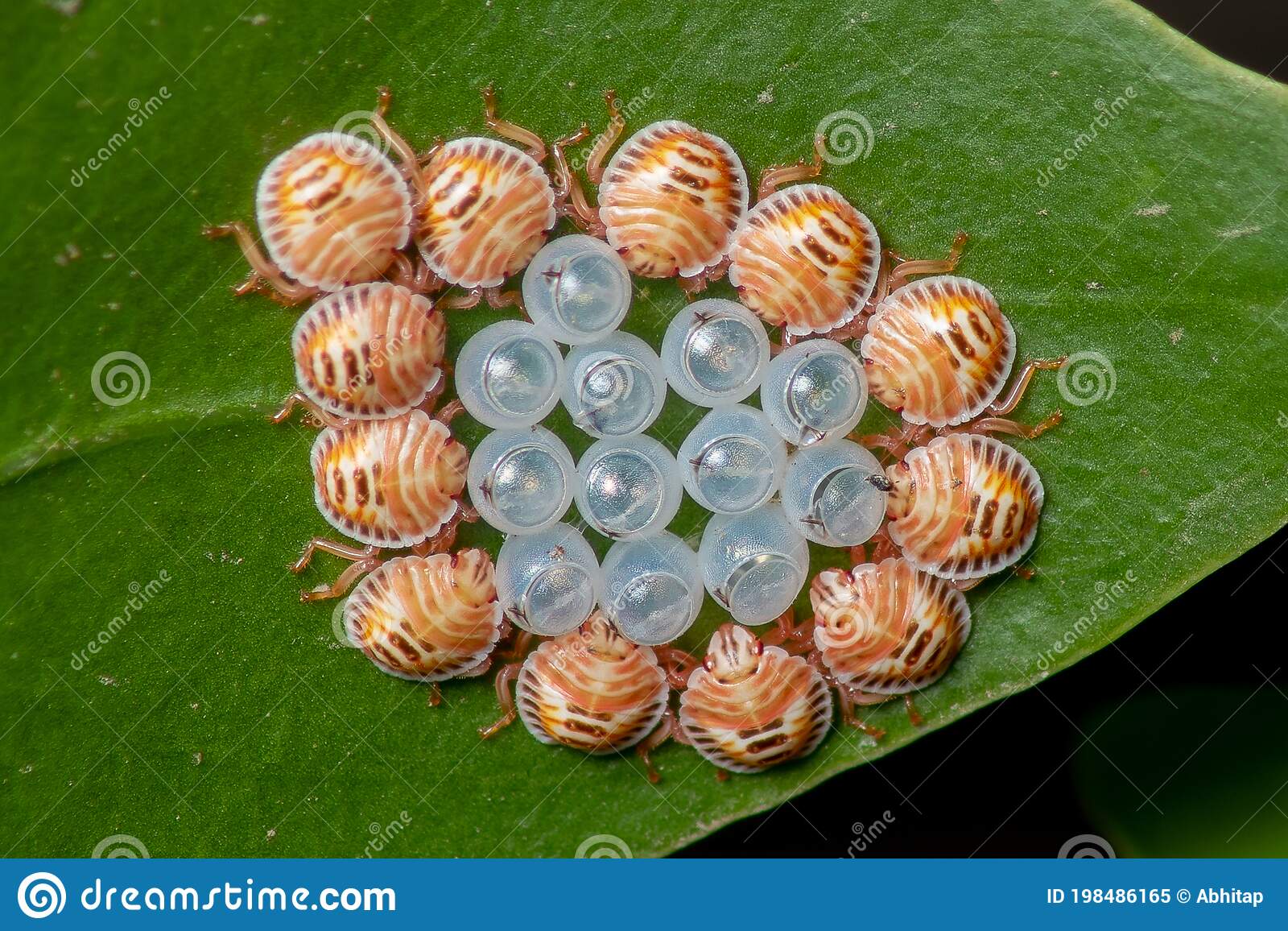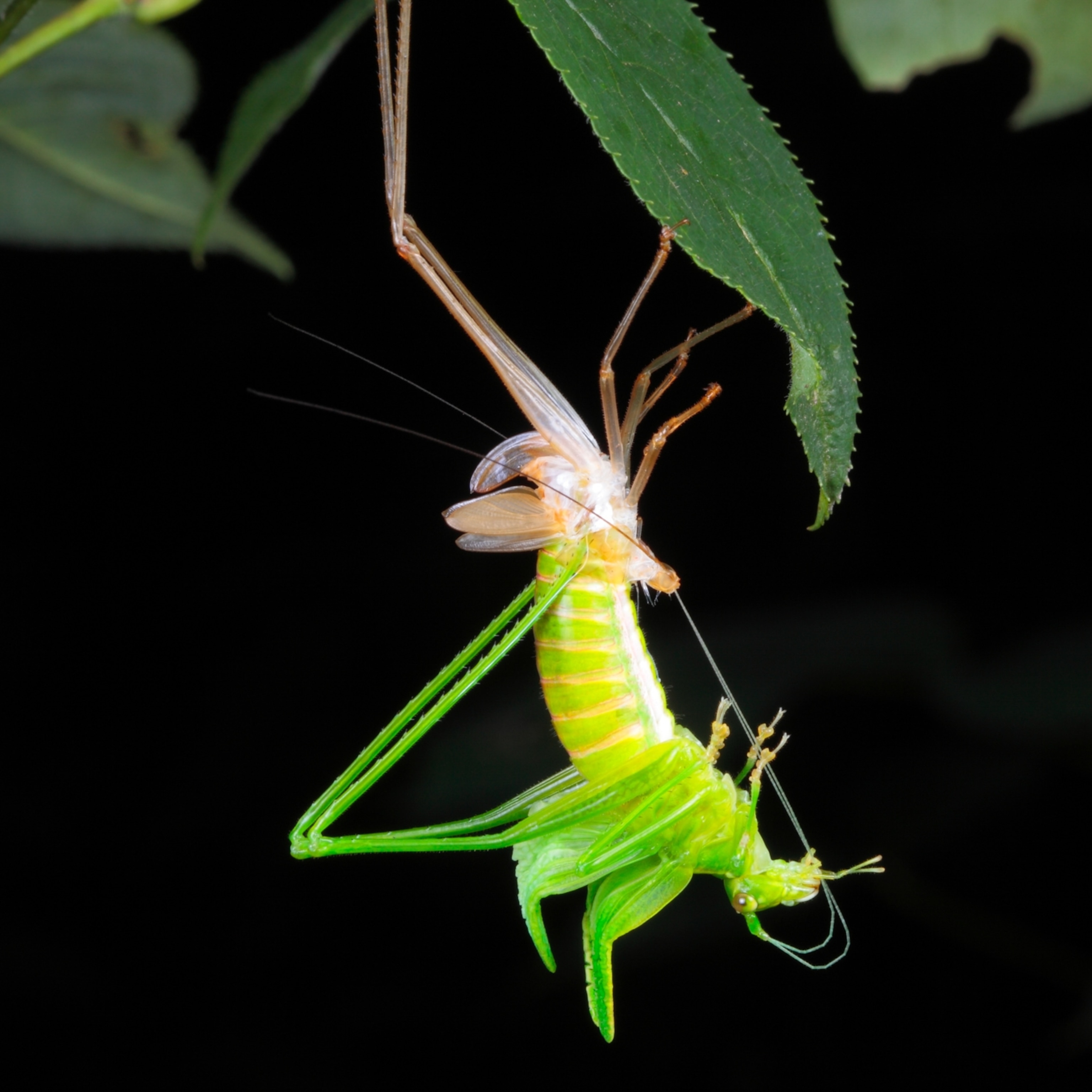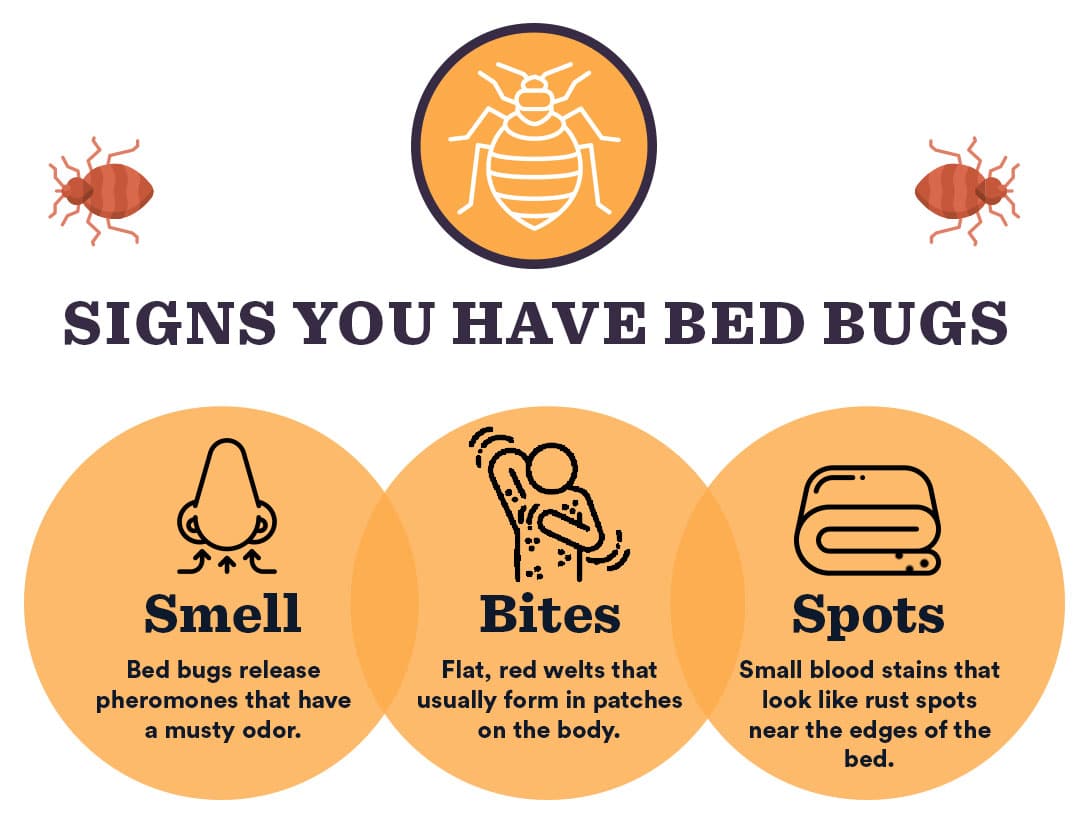As someone who has experienced the horror of living with bed bugs, I know all too well the question, “what do bed bugs leave behind?” Not only do these pests leave behind psychological distress and physical discomfort, they can also leave behind some very obvious signs of their presence. In this article, I’ll discuss the various traces of bed bugs that can be found in your home, as well as some preventative measures you can take to avoid an infestation.
What Are Bed Bugs?

Bed bugs are small, oval-shaped, parasitic insects that feed on human blood. They are reddish-brown in color, wingless, and approximately 1/4 inch long. Bed bug bites are painless, but can cause swollen, itchy welts. Bed bugs are not considered to be a health hazard, but can be a nuisance. Bed bugs can spread from one place to another through clothing, luggage, furniture, and other items that have been in contact with an infested area.
Bed bugs are difficult to detect and control because they hide in small cracks and crevices in and around beds, furniture, baseboards, and other objects. They can also hide in electrical outlets, behind wallpaper, and inside mattresses, box springs, and bedding. Bed bugs are nocturnal insects and they feed on humans while they sleep.
| Characteristics | Description |
|---|---|
| Size | 1/4 inch in length |
| Color | Reddish-brown |
| Shape | Oval |
| Habitat | Cracks and crevices in and around beds, furniture, baseboards, and other objects |
| Feeding Habits | Nocturnal, feed on humans while they sleep |
How Can You Identify Bed Bugs?

- Look for physical signs of bed bugs such as shed skins, eggs, and live bed bugs.
- Bed bugs are visible to the naked eye and typically measure approximately 5-7 mm in length.
- Look for bed bug fecal stains, which are small, dark, and rusty-colored spots.
- Check for a musty odor, which is caused by the presence of bed bugs.
- Inspect seams and crevices of the mattress, box spring, and headboard for signs of bed bugs.
Fecal Spots

I often find dark, rust-colored spots on my sheets and mattress. These are most likely bed bug fecal spots – the bed bug’s feces, which I can identify by its musty odor.
Eggshells

Bed bug eggs are only 1 millimeter in size, but if I look closely, I can see their translucent, white shells. These shells are the first signs of a bed bug infestation.
Shed Skin

Bed bugs shed their skin as they grow. They leave behind small, brownish shells that look like husks, which are sometimes mistaken for bed bug eggs.
Blood Stains

Bed bugs often leave behind blood stains on bedding, mattresses and furniture. These stains are usually reddish-brown and can be identified by their distinctive odor.
The Signs of Bed Bug Activity

- Fecal stains or smears on bed sheets, mattresses, walls, clothing, and other surfaces
- Rusty-colored blood spots from crushed bed bugs on sheets and mattresses
- A sweet musty odor from live bed bugs
- Small white eggs, eggshells, and molted exoskeletons found near beds
- Live bed bugs crawling in the bed or other furniture
If you see any of these signs, it is likely that you have a bed bug infestation and should take immediate action to address it.
What to Do If You Suspect You Have Bed Bugs

| Step | Action |
|---|---|
| 1 | Check for physical signs of bed bugs, such as rust-colored spots on bedding, eggs and eggshells, bloodstains on sheets, and live bugs. |
| 2 | Vacuum suspected infestation areas thoroughly to remove any bed bugs, eggs, and debris. |
| 3 | Wash all bedding and clothing in hot water and dry on the highest heat setting. |
| 4 | Contact a pest control professional to inspect and treat the area. |
| 5 | Store all items suspected of being infested in sealed plastic bags or containers. |
If I suspect I have bed bugs, I need to take the following steps: check for physical signs of bed bugs, vacuum suspected infestation areas, wash all bedding and clothing in hot water and dry on the highest heat setting, contact a pest control professional, and store all items suspected of being infested in sealed plastic bags or containers.
Prevention
- Inspect second-hand furniture, beds and couches before bringing them into the home.
- Reduce clutter around the bed and through the home to limit hiding spots for bed bugs.
- Vacuum regularly and dispose of the vacuum bag after use.
- Wash and dry bedding, curtains and clothing on the hottest temperatures possible.
- Use mattress and box spring encasements to trap bed bugs and monitor for any sign of an infestation.
- Regularly inspect the mattress, box spring, headboard, and other areas where bed bugs may be hiding.
- Install door sweeps and repair cracks in walls to limit the ability of bed bugs to travel through the home.
- Check luggage and clothing after staying in a hotel or other places with potential bed bug infestations.
Treatment
Once you have identified and confirmed a bed bug infestation, you need to take immediate action to treat the problem. Treatment is complex, and often requires the help of a professional pest controller. In many cases, a combination of chemical, non-chemical and physical control methods are necessary to eliminate the bed bugs. Treatments may include the use of insecticides, heat treatments, steam treatments and freezing treatments. It is important to treat all affected areas, and to ensure that any eggs that may have been laid are also treated. Additionally, thorough vacuuming and cleaning of the area is necessary to remove any dead bugs or eggs that may remain.
Frequently Asked Questions
What do bed bugs leave behind that is indicative of their presence?
Bed bugs leave behind telltale signs of their presence. These include dark spots of excrement on mattresses and bedding, cast skins of molted exoskeletons, eggs, and a sweet musty odor. Bed bugs are also known to leave bites on people’s skin. If you notice any of these signs, it is likely that bed bugs are present in the area.
How can I tell if I have bed bug stains on my sheets?
Bed bug stains on sheets can range from reddish-brown spots to small black dots. The stains are a result of the bed bugs feeding on human blood, excreting their waste, and/or being crushed. To confirm the presence of bed bug stains, use a white cloth and dab at the suspected area. If the stain smears on the cloth, it is likely from bed bugs.
What does a bed bug blood stain look like?
Bed bug blood stains are typically dark red or rust colored spots that may be found on sheets, mattresses, and clothing. They are caused by the bed bug being crushed or squashed while feeding on the host’s blood. The stains may also be accompanied by fecal spots or small white eggs.
How Large Can Bed Bug Blood Stains Be?
Bed bug blood stains can range from red speckles to reddish-brown splotches, and can be up to 3/16 of an inch long. These stains are usually found on mattresses and bedding where bed bugs have recently fed.
What is the black material left behind by bed bugs?
Bed bugs leave behind dark, rusty-colored stains on surfaces. These stains are a combination of dried excrement, shed skins, and secretions from glands. The stains may have a musty odor and can be found on bedding, mattresses, furniture, and walls. Bed bugs may also leave small, brownish eggs in clusters near where they hide.
Conclusion
Bed bugs are a major nuisance and are capable of leaving behind physical and chemical traces of their presence. Their fecal matter, eggs, and shed skins can be detected with the naked eye, while the odors they emit, as well as the pheromones they release, are more difficult to detect. However, with the right knowledge and equipment, a homeowner can detect the presence of bed bugs in their home and take the necessary steps to eradicate them.






